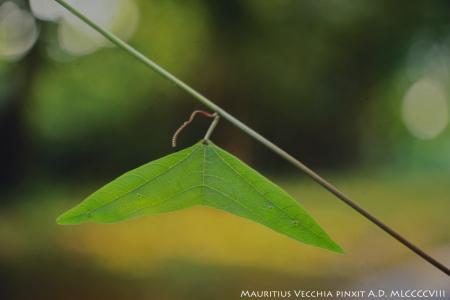
SUBGENUS: decaloba
SUPERSECTION: decaloba
SECTION: decaloba
GEOGRAPHICAL DISTRIBUTION OR ORIGIN:
Ecuador.
MINIMUM TEMPERATURE: 7 °C
IDEAL MINIMUM TEMPERATURE: 10 °C
ETYMOLOGY: Anfractus in Latin means sinuous, tortuous with evident reference to the vivacity that this climber manifests in the wrapping with circular movements of the stems around the supports.
DESCRIPTION:
The shape of the leaves of this attractive climber leaves us perplexed, as it is almost always that of an isosceles triangle. The two oblique sides and the base are usually straight. Infrequently, the latter is enriched by a hint of a third lobe almost as if to deviate from the other species belonging to the same subgenus. Its flowers are pure white.
Its homeland is Ecuador, where it also grows in mountainous areas. It supports minimum temperatures up to about 7°C for short periods, thus characterising itself as a delicate and demanding passiflora. It therefore requires winter conditions suitable for tropical plants, but can be grown outdoors during the summer.
It looks like a dense and vigorous climber, with thin stems having a sub-angular section. It clings to supports with a circular movement, also using this method to reach bright and warm positions.
The leaves, of an intense green colour, are transversely bilobed, almost perfect triangular in shape. Two series of small protruding leaf glands run parallel to the two lateral nervations.
The flower, pure white in all its parts, with the exception of the androgynophore which is red and green, has a maximum diameter of about 4 cm and is formed by sepals and slightly retroflexed petals. The crown of the filaments, formed by 3 series, covers them following their backward inclination, while the large operculum wraps and surrounds the androgynophore itself, placing itself spaced and parallel to it.
The fruits are black, spherical in shape.
Growing in pots is easy and satisfying. The soil to use should be light and rich in humus; watering, frequent and abundant during the hottest season, should be reduced and limited in winter.
Multiplication by cuttings is easy and seed germination presents no problems.